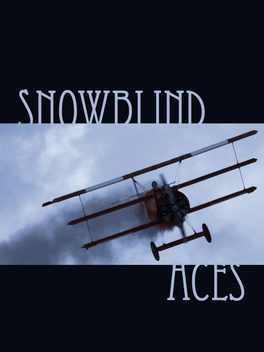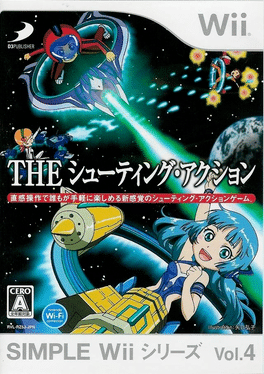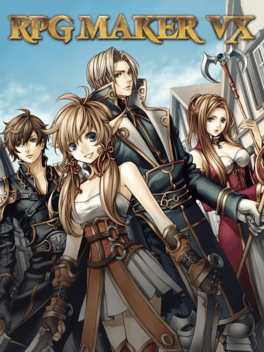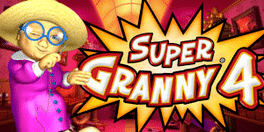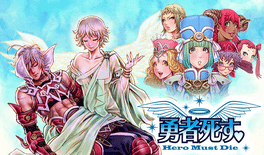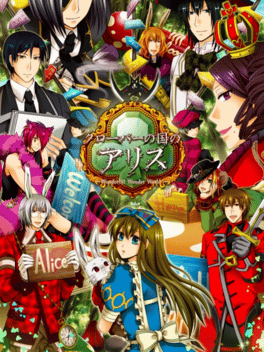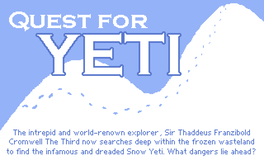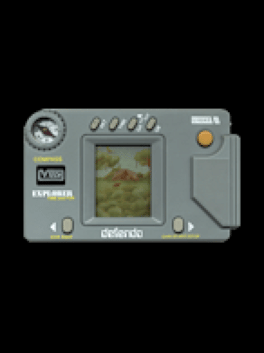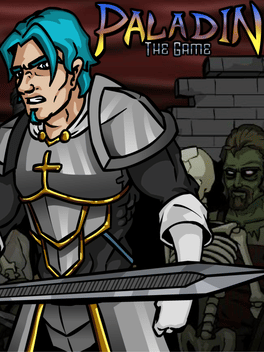New Games - Page 10035
-
Snowblind Aces
2007
Snowblind Aces
2007
Two aces shelter from a snowstorm under the wing of a biplane. They've duelled and played in the air for years. Love is inevitable. But what kind of relationship will they end up in? -
Simple Wii Series Vol. 4: The Dokodemo Asoberu - The Shooting Action
2007
The Dokodemo Asoberu - The Shooting Action is an Action game, developed and published by D3Publisher, which was released in Japan in 2007. -
Simple Wii Series Vol. 3: Ason de Wakaru - The Party Casino
2007
Ason de Wakaru - The Party Casino is a Miscellaneous game, developed and published by D3Publisher, which was released in Japan in 2007. -
RPG Maker VX
2007
RPG Maker VX
2007
star 6RPG Maker VX is a tool for Windows which allows you to design and play your own RPG. It requires no programming knowledge and allows the designer to create their own tilesets, character sprites, and scripts. -
Suzumiya Haruhi no Yakusoku
2007
The Kitakousai festival was coming up at school, but the members of the SOS Brigade were running around making the movie out of Haruhi’s idea. What happened at this busy time for the members? Taking place on the backstage that wasn’t shown in the anime, players can enjoy the original story of the game. The secret that leads to the TV anime is now revealed!! Suzumiya Haruhi no Yakusoku is a visual novel for the PlayStation Portable, mainly based on The Sigh of Haruhi Suzumiya light novel with new and written scenarios exclusively made for the game. -
Star Ocean: First Departure
2007
star 7.9Star Ocean is a role-playing game that has garnered attention for merging sci-fi and fantasy in its story. It was originally released for the Super Famicom in 1996, followed by "Star Ocean: First Departure", a remake for PlayStation Portable in 2007. -
Super Granny 4
2007
Super Granny 4
2007
Everyone's favorite geriatric superhero, Super Granny, is back for an all-new, globe-trotting adventure! -
SpongeBob SquarePants: Underpants Slam
2007
star 7SpongeBob SquarePants Underpants Slam! is a fast-paced, side-scrolling multiplayer slapstick collect 'em-up, set deep in the ocean. An incredibly powerful storm current has disrupted a Royal Laundry shipment of the undergarments of Neptune, Lord of the Sea, and has spread his unmentionables across the bottom of the ocean. Neptune now calls upon all the commonfish to collect his lost undergarments, and fix this "delicate" situation. He's offered a bounteous reward to the sea creature who collects the most bloomers! -
Hero Must Die
2007
Hero Must Die
2007
The hero who defeated the demon king and saved the world in exchange for his life went on a journey to find the woman he loved with five days of life expectancy. Time in the game passes according to the action, and as death approaches, the hero gradually loses his power... A multi-scenario where you can experience new discoveries and new developments every time you play back. You can enjoy it as many times as you want due to the multi-ending where the content of the funeral changes depending on what you do before you live. -
Marble Blast Platinum
2007
Marble Blast Platinum (aka MBP) is a standalone modification of Marble Blast Gold released in 2007. -
Clover no Kuni no Alice: Wonderful Wonder World
2007
Clover no Kuni no Alice: Wonderful Wonder World is the second installment in the Heart no Kuni no Alice series and the direct sequel to Heart no Kuni no Alice. It was originally released in December 2007 for PC and later released for the PS2 and PSP. -
Quest for Yeti
2007
-
Defendo
2007
-
JFCBP2
2007
JFCBP2
2007
A community build project utilising Jonof port's new build limits to make a bigger and more detailed map. The aliens have taken over a moon base and it's up to Duke to terminate their occupation with extreme prejudice. -
Shaiya
2007
Shaiya
2007
star 7.4Shaiya is a stunning, free-to-play, fantasy MMORPG that immerses players in a massive war between the forces of Light and Darkness. Shaiya allows players to participate in solo or collaborative gaming, with many choosing to form large and powerful guilds. These alliances are capable of tackling the toughest monsters in the game or waging full-scale war on the opposing faction. As players conquer various challenges, they will be rewarded with new equipment and skills that will allow them to become a dominant power in Shaiya. -
Treasures of a Slaver's Kingdom
2007
In the cruel kingdoms north of the Viraxian Empire, a barbarian seeks treasure - and vengeance! A faux-retro adaptation of a nonexistent 1979 text adventure from an alternate timeline, itself based on a nonexistent 1979 pen-and-paper RPG (a complete scan of which is included). -
The Seven Sisters
2007
The Seven Sisters
2007
The Seven Sisters is a mini campaign for Thief II: The Metal age comprising a prologue and three missions, taking place across three nights. As a red moon hangs in the sky, explore a city in the midst of plague and unravel the mystery of the Seven Sisters. -
Paladin: The Game
2007
Paladin: The Game
2007
Here it is! the PALADIN game! Play as Auron and experience the action of the PALADIN series first hand in this fast paced sidescroller. -
Puppy Luv: Your New Best Friend
2007
Pick out your puppy and begin training him for all the fun he and you are about to have. Sit, stay, roll-over, come -- you name it! See if your friend can post the best time in the obstacle course, or if he can win the dog show!

